crwdns2915892:0crwdne2915892:0
Use this guide to replace a dead or low battery.
Before you begin, download the Rescue and Smart Assistant app to backup your device and diagnose whether your problem is software or hardware related.
If your battery is swollen, take appropriate precautions.
crwdns2942213:0crwdne2942213:0
-
-
If possible, drain the battery before disassembly. When the battery is charged, there's an increased risk of a dangerous thermal event if the battery is overheated or damaged during repairs.
-
Prepare an iOpener and heat the back of the phone along its bottom edge for about two minutes, or until it's slightly too hot to touch. This will help soften the adhesive securing the rear glass.
-
-
-
Apply a suction cup to the bottom edge of the rear glass.
-
Pull up on the suction cup with firm, constant pressure to create a slight gap between the rear glass and the frame.
-
If you have trouble, apply more heat to further soften the adhesive, and try again. The adhesive cools quickly, so you may need to heat it repeatedly.
-
Insert an opening pick into the gap you created under the rear glass.
I'm stuck on this step (literally and figuratively). I've heated it pretty hot and pulled pretty hard on the suction cup, but I can't see a gap…
I used a piece of laminating plastic instead of the pick and managed to slide it in!
My back delaminated at this point. That is, the clear plastic started to come away leaving the paint layer behind. Mine is (was) the indigo blue one.
-
-
-
Slide the pick all along the bottom edge of the phone to slice through the adhesive securing the rear glass.
-
-
-
Heat the right edge of the back of the phone to soften the adhesive underneath.
-
-
-
Slide the pick along the right edge of the rear glass to separate the adhesive underneath.
-
-
-
Heat the top edge of the back of the phone to soften the rear glass adhesive.
-
-
-
-
Slide the pick all along the top edge of the phone to slice through the adhesive securing the rear glass.
-
-
-
Heat the left edge of the back of the phone to soften the adhesive underneath.
-
-
-
Slide a pick along the left edge of the phone to slice through the rear glass adhesive.
-
-
crwdns2935267:0crwdne2935267:0Tesa 61395 Tape$5.99
-
If the glass remains stuck, re-heat and slice the adhesive repeatedly as needed.
-
Lift the rear glass carefully, making sure it's fully separated from any adhesive.
-
Remove the rear glass.
When cleaning old adhesive off the back glass, be careful not to scratch the inner coating of the glass. If you scratch this coating with tweezers, it will leave visible “nicks” on the back glass.
-
-
crwdns2935267:0crwdne2935267:0Tweezers$4.99
-
Use a pair of tweezers to carefully peel up the black tape covering the battery.
-
Remove the tape.
On my phone the sticker was covered by another NFC tag that was attached to the board under the cover. I yanked it out, breaking it in the process, but if you peel that sticker off the batter sticker first and leave it attached at the end, you should have more success.
Yes, there's the NFC tag that isn't mentioned, with its connection to the left. Thanks for the tip, Stuart; I gently lifted mine to the left and it seems to be intact. I guess I won't know until I try to pay for something.
-
-
-
Use a Phillips driver to remove seventeen screws securing the plastic cover:
-
Eleven grey 3 mm-long screws
-
Five black 2.5 mm-long screws
-
One silver 3.5 mm-long screw
The holes for the black screws are marked with a small triangle to differentiate them from the holes for the gray ones. I found this super helpful when reassembling!
-
-
-
Insert the pointed end of a spudger into the notch at the top left edge of the plastic cover.
-
Pry up with the spudger to lift the upper edge of the cover and release the clips holding the cover down.
-
Remove the plastic cover.
When reinstalling plastic cover, alignment is critical for underlying contacts to line up. Test all functions before sealing up the phone. If camera or speaker don’t work, recheck plastic cover installation and correct until all phone functions operate.
-
-
-
Use the pointed end of a spudger to pry up the battery connector and disconnect it.
What is the black part the battery is connects to called? The black part connected to the body of the phone.
Be very careful on this step! If you pry it out too roughly the connector will break. If you aren't very precise when putting the plug back in you will smash either the tiny tabs on the plug or the connector itself.
-
-
-
Prepare an iOpener and apply it to the right half of the screen for at least two minutes, in order to soften the battery adhesive underneath. Reheat and reapply the iOpener as needed.
-
-
-
Use an opening pick to steadily pry the battery up, starting from the outer edge of the battery.
-
Remove the battery.
I found it easier to remove the battery after I removed the mother board.
It’s much easier to remove the battery after the motherboard is removed from the opposite side
Merci. La batterie est difficile À décoller Mais tout été parfait.
-
Compare your new replacement part to the original part—you may need to transfer remaining components or remove adhesive backings from the new part before installing.
To reassemble your device, follow the above steps in reverse order.
For optimal performance, after completing this guide, calibrate your newly installed battery.
Take your e-waste to an R2 or e-Stewards certified recycler.
Repair didn’t go as planned? Try some basic troubleshooting, or ask our Motorola Moto G6 Answers community for help.
Compare your new replacement part to the original part—you may need to transfer remaining components or remove adhesive backings from the new part before installing.
To reassemble your device, follow the above steps in reverse order.
For optimal performance, after completing this guide, calibrate your newly installed battery.
Take your e-waste to an R2 or e-Stewards certified recycler.
Repair didn’t go as planned? Try some basic troubleshooting, or ask our Motorola Moto G6 Answers community for help.
crwdns2935221:0crwdne2935221:0
crwdns2935229:035crwdne2935229:0
crwdns2947412:08crwdne2947412:0
This is a beautifully done tutorial. I have written over 100 service manuals, and have seen few procedures described better than this.
One of the best instructions that I have used and the Ifixit tool kit was perfect and the price for everything was very good.
One of the best tutorials I have followed. Even this 73 year old was able to easily follow and finish the project without difficulty. Thank you, I now have a new battery in my cell phone. Happy customer.
Moto G6 charging problem
thank you for writing this up. I could follow your steps without any issue. The telephone is glued together really well, it took me many attempts to take off the back cover glass and also the battery. Just keep (re)heating the phone and slowly work with the picks, it will come off eventually.
Changed battery successfully and it is charging! Will also calibrate in order to set the battery to indicate charge correctly. I kept both a youtube tutorial and this tutorial up and doublechecked myself thoughout, it worked really well. Thank you so much, Ifixit, your instructions on various things have helped me through multiple projects.
Thank you for such an excellent tutorial. It along with the excellent kit for the Moto G6 battery made the job easy...
I praised too soon! Now when I try to charge the phone I get the message "charging will continue after the phone has cooled down", but the phone is not even warm. I have tried all the suggested solutions I could find, to no avail. I finally did a restore to factory defaults, again to no avail. Also when the phone boots up it immediately shuts down once booting is completed.

















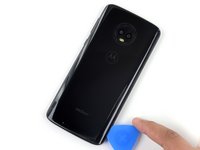
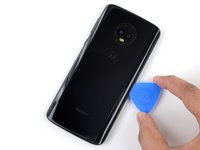
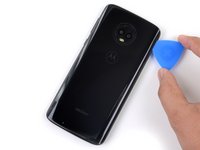




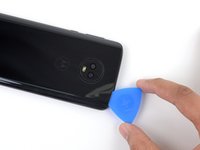
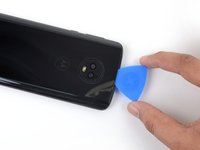
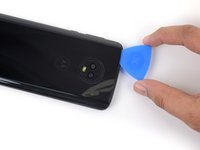




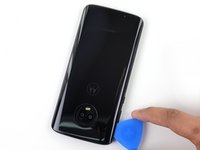
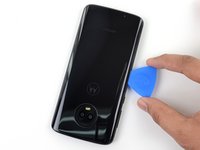
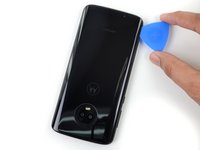



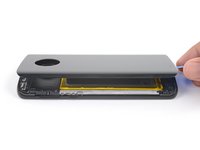




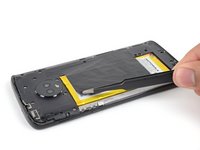
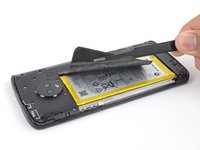




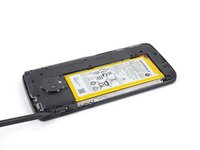
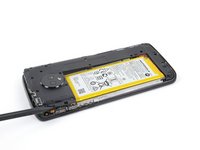
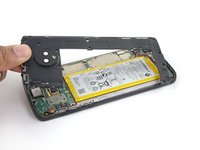


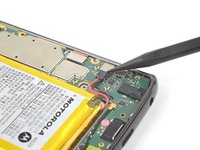
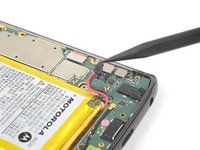




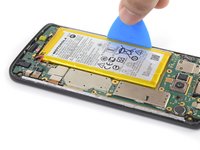
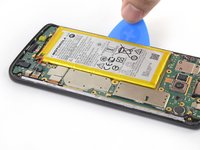


At what temperature shold the glass be heated to? My heat gun goes from 250 up to 1350.
Miles Raymond - crwdns2934203:0crwdne2934203:0
START LOW.
These plastics can be almost endlessly remelted, held at temp, etc., if done gently.
With a heat gun, I'd hesitate to go too far past 250°F/115°C too quickly until I was comfortable with the material.
Plastic WILL begin to burn and permanently deteriorate at 350-400°F or so.
Silicone can handle up to 400-500°F.
(Get a cast iron pot or pan to roughly 250°F/110°C, then invert and put a silicone cookie sheet on it to make a work surface that will make life waaaaaay easier. Preheat the device along with the pan for a few minutes, too.)
Filthy Pazuzu - crwdns2934203:0crwdne2934203:0